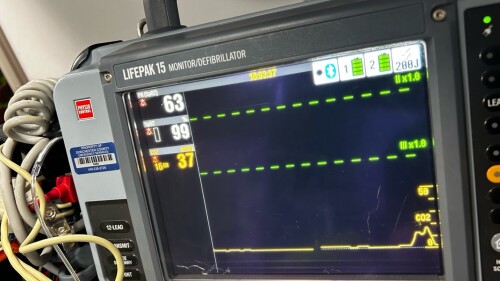Restraining patients is no joke. The potential for injury to either the patient or rescuer is huge. Unlike the police, who have broad powers in using “reasonable” force to detain a suspect, in the healthcare profession, we have to be especially careful to “do no harm.” Add to that admonishment that we are often poorly trained and prepared to properly restrain a patient in the field, and it all spells out a recipe for disaster.
Paitent restraint tips
Focus on several key points to remember when restraining patients in the midst of a violent behavioral emergency:
1. Avoid patient restraint if at all possible
Use your powers of persuasion. Verbal judo speaks to several techniques that all public safety personnel can use to calm patients and convince them to cooperate.
Remember that much of your communication to the patient involves body language — standing over patients, crossing your arms over your chest, planting your feet in an aggressive position; any of these postures can be interpreted as a threat by an already agitated patient.
2. Safety is paramount
Don’t try to restrain the patient if you are not confident of the outcome. Even the smallest patient can put up a hell of a fight when provoked. If there are objects around that can be used as weapons, clear them out if you can. If there are weapons — well, I’d leave.
3. Plan your approach
Recognize that you will be restraining your patient. That action verb will remind you that you may be causing harm. Plan accordingly to minimize injury. While one person engages in conversation with the patient, others should be discussing how and when to approach and restrain the patient.
4. Have strength in numbers
You MUST have enough people to manage restraining even a mildly agitated patient. Having at least one person for each limb, and one to distract the patient, and one to help with the restraints means having at least six rescuers involved.
5. Restrain the patient supine
While there are several adaptations of this position, many experts are stating that this is the safest position for the patient. Use spit hoods if necessary, but make sure the patient is able to breathe easily and you can monitor their airway and level of consciousness.
6. Keep the patient restrained
Once the fight is over, patients may often ask to have a restraint loosened or released. As much as you might want to, don’t. Remember, it may have taken six people to restrain the patient. Now, you are alone in the back. What are the odds of injury to you if the patient acts out again?
7. Above all, keep cool
The person tied down on the cot is a patient. Don’t take things he or she says or does personally. Don’t neglect your duties just because you might be angry.
This article, originally published December 23, 2010, has been updated with a video and additional resources.













